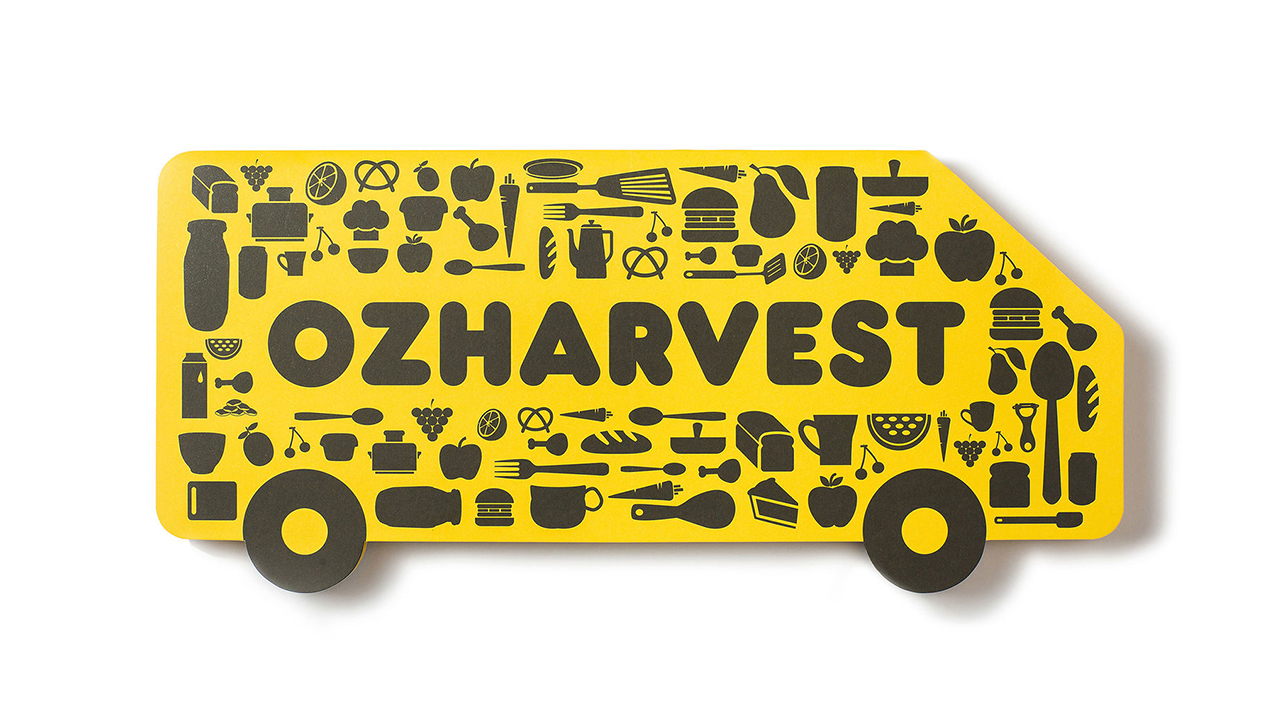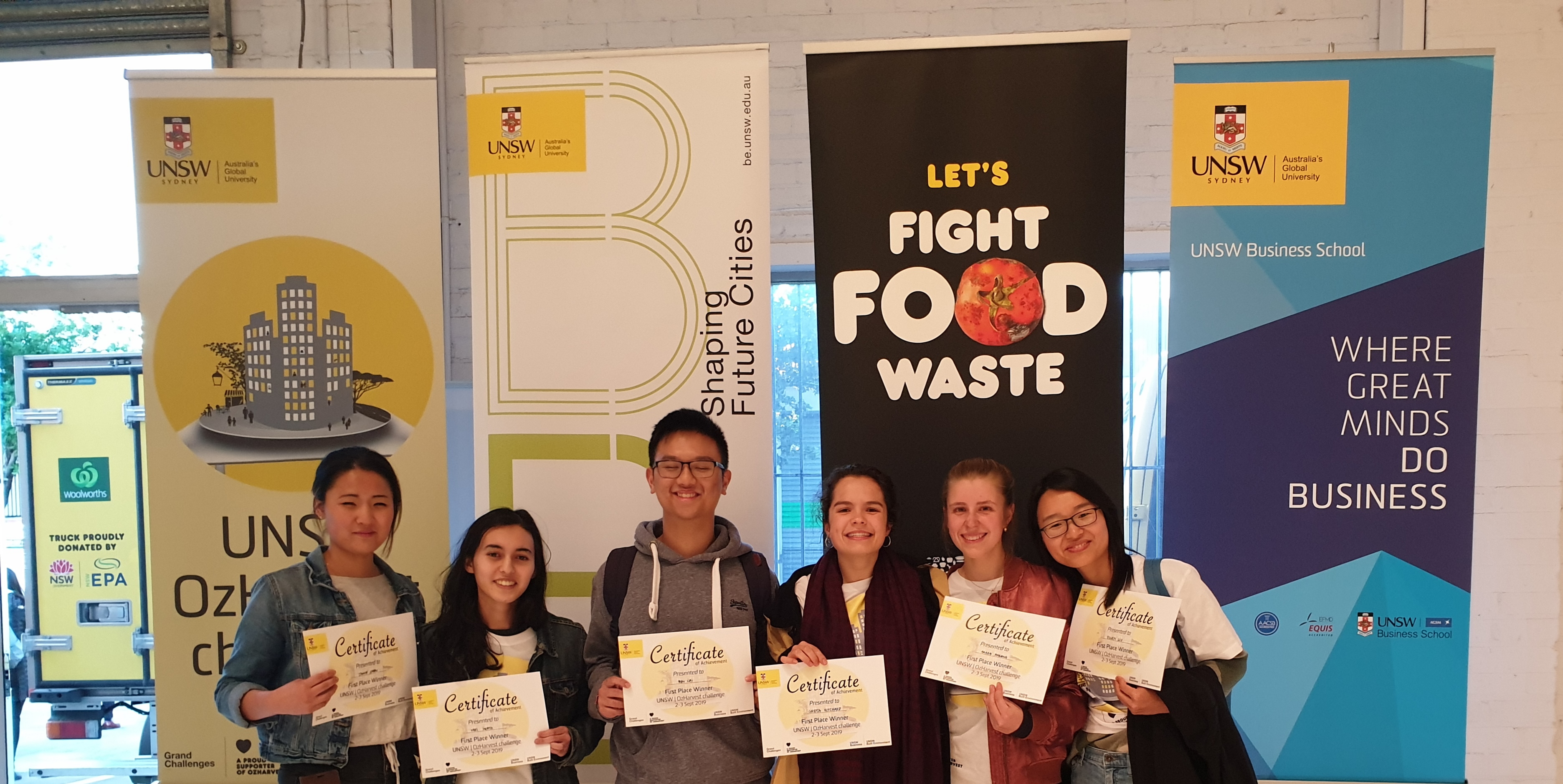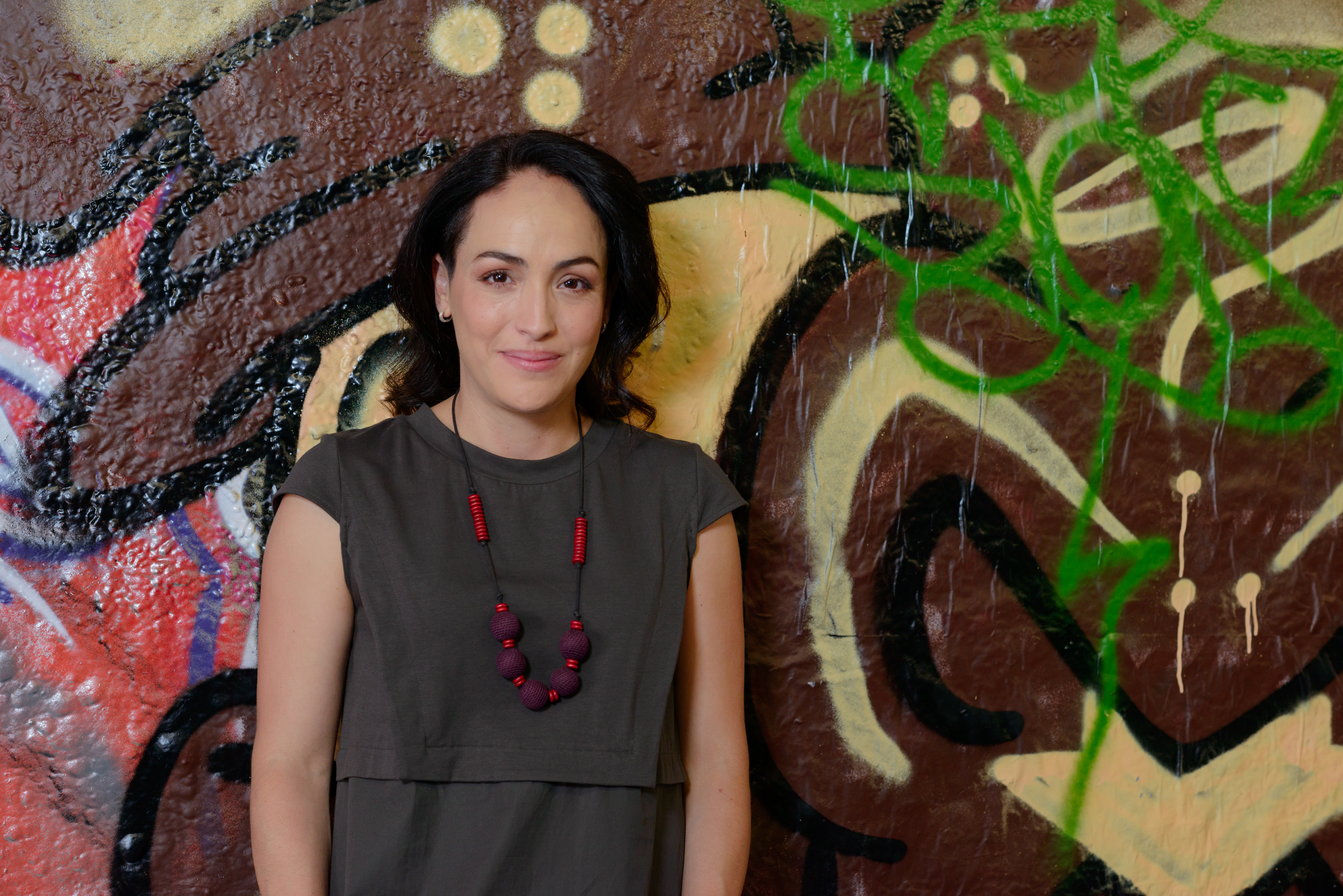Fighting waste: UNSW and OzHarvest plan a better food future

A hackathon generated real solutions to the vast amount of unused food that our communities put into landfill.
As the world grapples with the waste crisis, a two-day hackathon event has brought together Business and Built Environment students and industry experts to brainstorm ways to combat the issue.
Jointly hosted by UNSW’s Grand Challenges program and food rescue organisation OzHarvest, students tackled the important question: How can we reduce residential food waste in high-density urban environments?
UNSW Built Environment Education-Focused lecturers and event facilitators Eva Lloyd and Dr Alanya Drummond wanted the event to increase awareness of just how much food produced for human consumption globally ends up in landfill. Research shows around 1.3 billion tonnes of food is wasted each year. Half of that waste is generated at home.
“In Australia, we have a national target to halve food waste by 2030,” Dr Drummond said. “To quote OzHarvest’s Fight Food Waste campaign – change is required at all levels of society and it starts with changing our behaviour at home. With relatively low food prices, and constant supply, we have lost our connection to where it comes from, and its true value.”
Over the two days, 35 students from six teams heard from more than 50 speakers and mentors representing fields as diverse as recycling technologies, high-density architecture, social entrepreneurship, Indigenous food management systems, behaviour change and strata law.
Mayor of North Sydney Jilly Gibson and Gardening Australia’s Costa Georgiadis and Clarence Slockee inspired students to approach the challenge from multiple perspectives. Humanitarian response expert Professor David Sanderson and founder of the UNSW Centre for Sustainable Materials Research & Technology (SMaRT) Scientia Professor Veena Sahajwalla were other leaders.
“We need to connect people back to the food that they eat,” Mayor Gibson told the group. “Community gardens are growing at a rapid rate and I feel if people grow their own delicious fresh food, they are not going to waste it. In my mind, if we can make people love fresh food, and be aware of where that food has come from, there will be less waste.”
Solutions with a community focus
The students’ solutions identified four major behaviours to reduce food waste: look, buy, store, cook. Dr Drummond and Ms Lloyd were impressed that the solutions focused as much on community connection as they did on reducing food waste.
“The 35 students across the six teams developed solutions that ranged from a high-tech ‘smart’ garbage chute to sort organics from recyclables, to a mobile neighbourhood kitchen where you can learn recipes from elders,” said Ms Lloyd.
The winning team – Community Pantry – took home the $2000 prize for their method of storing and reusing food within high-rise residential towers.
“Community Pantry’s method involved a range of shared storage spaces on each floor to minimise wastage when your dry goods sit unused for long periods of time, coupled with rooftop community gardens for growing fresh fruit and veg, plus a series of market day events where neighbours could swap gossip and fridge goodies to create a meal for the block.”

Change on a large scale
The student proposals will contribute to the next stage of the OzHarvest Fight Food Campaign.
OzHarvest NSW State Manager Richard Watson told the students: “OzHarvest really values your ideas. I will be taking them back to the management team because fighting food waste in the home really is the next port of call for OzHarvest. We have done a lot of work fighting food waste in the commercial world, but half of the food wasted is from our homes and we are really keen to tackle that issue. I know we will be pulling ideas from all of the proposals and presenting them forward to the team.”
The interdisciplinary nature of the OzHarvest Grand Challenge was reflected in the hackathon’s steering team that spanned UNSW Built Environment, UNSW Business and UNSW Grand Challenges. The team exemplified collaboration and offered students diverse and innovative interdisciplinary learning experiences.
“In their teams, students were asked to consider their behavioural strengths and weaknesses, rather than just their disciplinary knowledge,” Built Environment lecturer Eva Lloyd said. To foster this, “students adopted ‘hack hats’, including roles such as ‘the nitty gritty’ who focused on detailed forecasting or ‘the left field’ who threw unexpected ideas into brainstorming sessions. This meant their ideas were multidimensional in strategy and more far-reaching in impact.
“The concept of the hackathon itself as well as the behavioural ‘hack hats’ and a ‘live research’ forum are pedagogical methodologies we are researching and testing.”



